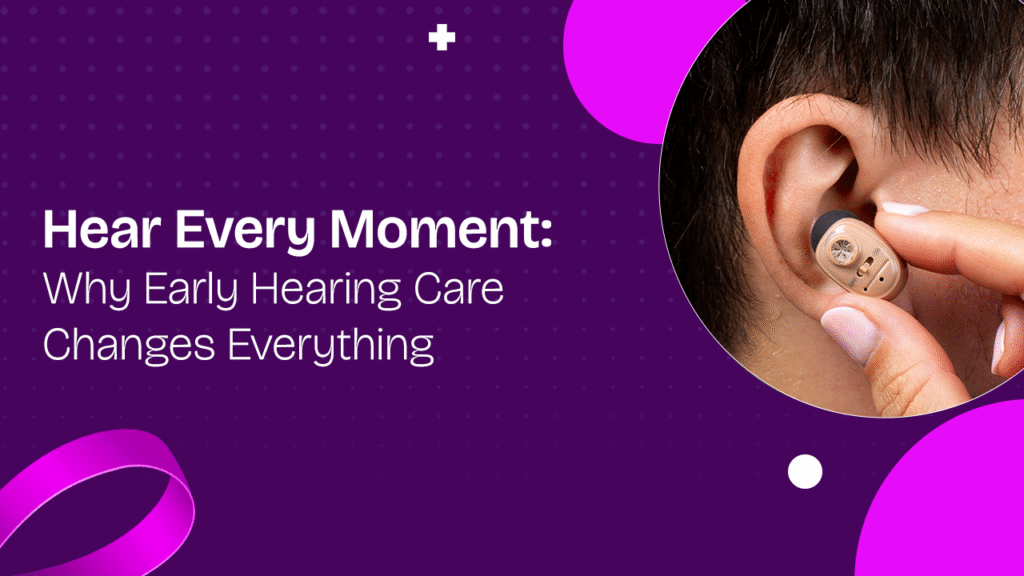What is an Audiometry Test?
An audiometry test is a comprehensive assessment of a person’s ability to hear various sounds, frequencies, and pitches. These tests are conducted using a range of techniques to evaluate hearing acuity and to diagnose any hearing impairments. The importance of audiometry tests cannot be overstated, as they are essential for identifying hearing loss early, which can significantly impact one’s quality of life. Early detection allows for timely intervention, whether through medical treatment, hearing aids, or other assistive devices, ultimately helping individuals maintain their ability to communicate effectively and enjoy everyday sounds.
Who Needs an Audiometry Test?
Audiometry tests are not just for the elderly, although age-related hearing loss is a common concern. Infants and young children often undergo these tests to ensure their hearing is developing normally, as hearing is crucial for language acquisition and overall development. Adults exposed to noisy environments, such as construction workers or musicians, also need regular hearing assessments to prevent noise-induced hearing loss. Additionally, individuals who experience sudden hearing changes, ear infections, or have a family history of hearing problems should consider audiometry testing. Essentially, anyone who notices a change in their hearing or who is at risk for hearing loss should undergo an audiometry test to ensure their auditory health is intact.
The Science Behind Hearing
How We Hear: A Quick Overview
Hearing begins when sound waves enter the outer ear, travel through the ear canal, and strike the eardrum, causing it to vibrate. These vibrations are transmitted to the three tiny bones in the middle ear, known as the ossicles, which amplify the sound and send it to the cochlea in the inner ear. The cochlea is a spiral-shaped, fluid-filled structure lined with tiny hair cells that convert these vibrations into electrical signals. These signals are then transmitted via the auditory nerve to the brain, where they are interpreted as recognizable sounds. This complex process happens almost instantaneously, allowing us to perceive and react to the world of sound around us.
Common Hearing Problems
Hearing issues can range from mild to profound and can affect one or both ears. Common problems include conductive hearing loss, where sound waves are not efficiently conducted through the outer or middle ear. This can be due to ear infections, earwax buildup, or abnormalities in the ear structures. Sensorineural hearing loss occurs when there is damage to the inner ear or the auditory nerve and is often permanent. This type of hearing loss can be caused by aging, exposure to loud noises, certain medications, or illnesses. Mixed hearing loss is a combination of both conductive and sensorineural issues. Audiometry tests help identify the type and severity of hearing loss, guiding appropriate treatment options.
Types of Audiometry Tests
Pure Tone Audiometry
Pure tone audiometry is the most common hearing test, measuring an individual’s ability to hear sounds at various pitches and volumes. During the test, the patient wears headphones and listens to a series of tones, indicating when they can hear each sound. This test helps identify the quietest sound a person can detect at different frequencies, creating an audiogram, which is a visual representation of their hearing ability. Pure tone audiometry is fundamental in diagnosing the degree and type of hearing loss.
Speech Audiometry
Speech audiometry evaluates how well a person can hear and understand speech. This test typically involves repeating words or sentences presented at different volumes. It assesses both the clarity and comfort level of speech perception, providing valuable information about a person’s ability to communicate in everyday situations. Speech audiometry is crucial for determining the need for hearing aids and other auditory rehabilitation.
Bone Conduction Tests
Bone conduction tests measure the ability of the inner ear and auditory nerve to process sounds, bypassing the outer and middle ear. During this test, a small vibrator is placed behind the ear on the mastoid bone, sending sound vibrations directly to the inner ear. This helps to determine if hearing loss is due to issues in the outer or middle ear (conductive) or if it’s a sensorineural problem within the inner ear or auditory nerve. Bone conduction tests are essential for providing a comprehensive understanding of hearing health.
Preparing for Your Audiometry Test
What to Expect During the Test
Knowing what to expect can ease any anxiety about an audiometry test. The process is straightforward and non-invasive. You’ll start by discussing your hearing concerns and medical history with an audiologist. Then, you’ll sit in a soundproof booth, wearing headphones or ear inserts, while the audiologist conducts various tests. These may include listening to tones, repeating words, and experiencing vibrations. The entire procedure usually takes about 30 to 60 minutes, and you’ll receive immediate feedback on your hearing status.
Tips for Accurate Results
To ensure accurate results, it’s important to follow a few simple tips. Avoid exposure to loud noises for at least 24 hours before the test, as this can temporarily affect your hearing. Make sure your ears are clean and free of wax buildup, which can interfere with the test. Be honest about your hearing experience and any medications you are taking, as some drugs can affect hearing. Finally, relax and follow the audiologist’s instructions carefully during the test.
Understanding Your Results
Deciphering the Audiogram
The audiogram is a graph that shows the softest sounds you can hear at different pitches or frequencies. The vertical axis represents the volume (measured in decibels), while the horizontal axis represents the frequency (measured in Hertz). Your results will be plotted on this graph, with symbols indicating your hearing thresholds for each ear. A line connecting these points forms your hearing profile, which the audiologist will explain in detail, helping you understand your hearing capabilities and any areas of concern.
What Your Results Mean
Your audiogram provides a clear picture of your hearing health. Normal hearing ranges from 0 to 25 decibels, while higher thresholds indicate varying degrees of hearing loss. Mild hearing loss ranges from 26 to 40 decibels, moderate from 41 to 55, moderately severe from 56 to 70, severe from 71 to 90, and profound above 90 decibels. The audiologist will discuss what these levels mean for your daily life, including any recommended treatments or interventions.
Follow-Up Steps After Your Test
Possible Treatments for Hearing Loss
If your audiometry test indicates hearing loss, several treatment options are available. For conductive hearing loss, medical treatments or surgery might be required to address the underlying issue. Sensorineural hearing loss is typically managed with hearing aids, which amplify sounds to make them easier to hear. In some cases, cochlear implants might be recommended for more severe hearing loss. The audiologist will work with you to determine the best course of action based on your specific needs and lifestyle.
Hearing Aids and Other Assistive Devices
Hearing aids come in various styles and technologies, from behind-the-ear models to invisible in-the-canal devices. Modern hearing aids offer advanced features such as Bluetooth connectivity, rechargeable batteries, and noise reduction capabilities. Additionally, assistive listening devices like amplified telephones, TV listening systems, and personal amplifiers can further enhance your hearing experience. The audiologist will help you choose the most suitable devices to improve your hearing and overall quality of life.
Preventive Measures for Hearing Health
Protecting Your Ears in Everyday Life
Maintaining good hearing health involves adopting protective habits. Avoid prolonged exposure to loud noises by wearing earplugs or earmuffs in noisy environments. Keep the volume at a safe level when using headphones or earbuds. Regularly clean your ears gently and avoid inserting objects that can cause damage. Stay vigilant about any changes in your hearing and seek professional advice promptly to address any issues early.
Regular Hearing Check-Ups
Regular hearing check-ups are crucial for monitoring your auditory health. Adults should have their hearing tested every few years, while those at higher risk, such as people exposed to loud noises or with a family history of hearing loss, should schedule annual tests. Early detection of hearing problems allows for timely intervention, preserving your ability to communicate effectively and enjoy the sounds of life.
Frequently Asked Questions About Audiometry Tests
Common Concerns and Misconceptions
Many people have concerns about audiometry tests, fearing discomfort or complex procedures. However, these tests are painless, straightforward, and essential for maintaining good hearing health. Another common misconception is that hearing loss only affects the elderly. In reality, people of all ages can experience hearing issues, making regular testing important for everyone. Understanding the simplicity and importance of these tests can alleviate any apprehensions.
Expert Answers to Your Questions
For those with lingering questions about audiometry tests, seeking expert advice can provide clarity. Audiologists are trained to address any concerns and explain the process in detail. Common questions might include the accuracy of the tests, how to interpret results, and what steps to take if hearing loss is detected. An open dialogue with a hearing professional ensures you receive accurate information and the best care for your hearing health.
Connect with Crystal Hearing Solutions
Recent Posts









